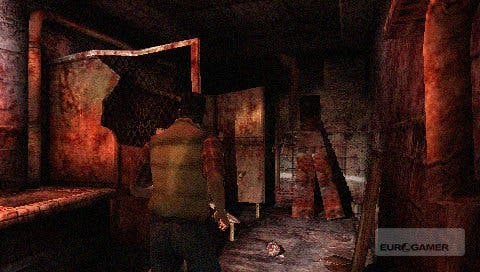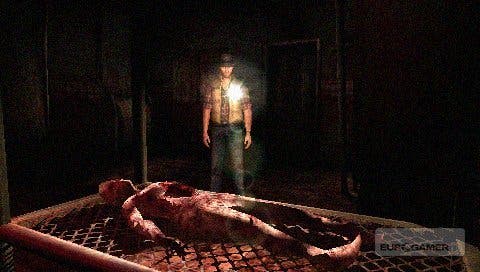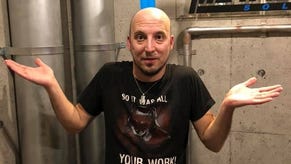Silent Hill Origins
The root of all evil.
"...I'm here for you. See?"
As such, the team doesn't feel that the PSP is a limiting platform - but it's certainly one that brings unique challenges. Previously, Silent Hill games relayed a lot of information to the player through rumble or audio feedback. Neither of those channels can be relied upon on the PSP, so now the game uses subtle visual cues in their place. The heart-beat vibrations which indicated low health are replaced by a red pulsing glow at the screen edges, while the radio noise which scared the crap out of a generation of videogamers by telling us when enemies are nearby has been supplemented with a cool, flickery, aged-film effect on screen.
Moreover, while the team would love for everyone to experience the game curled up in their bed in the dark, with the sound up full, they know that not everyone plays handheld games like that. Silent Hill has traditionally been a very dark game, which wouldn't work terribly well for those playing outdoors or on brightly lit public transport. For those people, the team has created a gamma slider entirely independent of the PSP's own brightness controls, which should mean that everyone can set the screen to a level which they can see easily.
In pure technical terms, Silent Hill Origins is something of a marvel. It looks better than its predecessors on the PlayStation 2, with detailed player and monster models, gorgeously realised environments and lovely atmospheric effects on the thick, realistic fog which pervades the town. Of particular note is the player's torch, which casts fully realistic shadows off every object in the world - an amazing achievement given the PSP's graphics power. This is especially eerie when fighting enemies, as their huge shadows are projected onto the walls behind them while you bludgeon them into submission.

In audio terms, too, Origins looks set to live up to the high standards set by its predecessors. One of the only members of Team Silent to be fully involved in Origins' development is legendary composer Akira Yamaoka, whose compositions have given the previous games (and indeed the movie) much of their atmosphere. He wrote the full soundtrack for Origins, and it is backed up with some superb sound direction which emphasises uneasy, discordant noise in different parts of the game we visited, fully leveraging the possibilities of using sound to make the player very, very uncomfortable with the environment.
Memories of Alessa
All of which is, I'm absolutely delighted to report, vastly more positive than I could ever have dared to expect. On all of those fronts, the dedication of the team to respecting the Silent Hill formula is paying off in spades, and the game we got to play in Portsmouth is unquestionably a fine Silent Hill game in almost every regard. Indeed, on the basis of gameplay and atmosphere alone, Origins seems far more comfortable with its place in the franchise than the retrofitted spin-off Silent Hill 4 was - a great achievement given that it has been entirely crafted by an external team.
There remains, however, one vast, looming question - one which cannot be answered by half an hour of playtime. Silent Hill lives or dies, to a large extent, on the basis of its story and characters. While Origins is confirmed to fit in a "watertight" way with the Silent Hill canon, checked and double checked past Team Silent's own Necronomicon of storyline, that's no actual guarantee of a compelling ride through the game's ten hours.

However, the noises coming out of the team in Portsmouth on this front are nothing if not encouraging. Set seven years before the events of the first Silent Hill (fans of the series may go "ohhhh!" at this point, if you wish), the game explores what happened to the crucial character of Alessa before the first game - and the protagonist, Travis, also seems to be a complex character, whose own private demons are likely to be behind his entanglement in the whole mess.
More importantly than simple plot details, however, Oertel, Simmons and the rest of the design team seem to keenly understand how Silent Hill works. Simmons, with whom the storytelling responsibility lies, reels off Team Silent's favoured influences - David Lynch, Jacob's Ladder, Stephen King, and the list goes on - and opines that while the British team may bring a slightly different flavour to the game, the British sense for horror and storytelling is surprisingly close to Japanese sensibilities in many ways.
His goal, he says, was to combine Silent Hill 1's cult story with Silent Hill 2's emotional, personal journey - a match which sounds like music to our ears. Strange, discordant music, filled with uncomfortable trills and difficult sounds; the sort of music Akira Yamaoka uses to bring a sad, melancholy little town in the American mid-west to life in a haunting, tragic way. Some doubts may linger, but by and large we're trapped in the dream all over again. Something is calling us back to Silent Hill - and we can't wait for our next visit.



